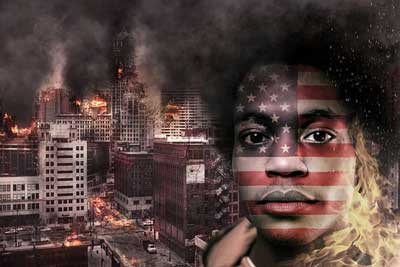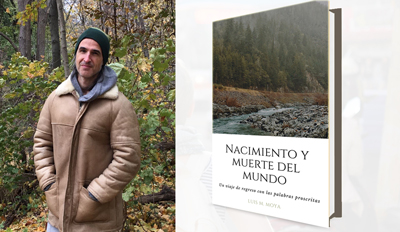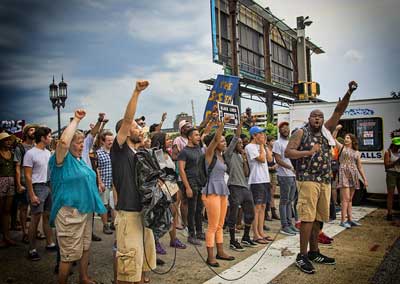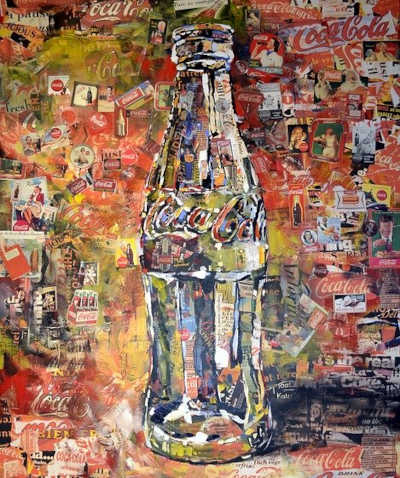

Highlights
"In addition to the worldwide consensus for the BLM movement"— Monica
"His actions as a government will certainly be influenced by racism and its nuances"— Monica
"Suffice it to say that in the KKK’s official magazine"— Monica
"The year just ended brought to light a theme that for many had been overcome: racism"— Monica

Send us your article + make money + win awesome gifts
Add Comment
Nhlanhla Lux Fake Account RACISM Scandal: RESOLVED!!! • Opinion Override
Trump is Using National Guard Tragedy to Justify Racist Immigration Policy • Maddie’s Hot Take
Nigel Farage racism allegations: is he finally rattled? • Pod Save the UK
"It Wasn't Me!" - Nhlanhla Lux Denies Racist Post #southafrica #nhlanhlalux • Opinion Override










The year just ended brought to light a theme that for many had been overcome: racism.
In the USA in particular, it continues to be a cause of contrasts and tensions, also because of the takeover of the new president, the Democrat Joe Biden. His actions as a government will certainly be influenced by racism and its nuances.
It’s in this climate of tension and uncertainty that moves Black Lives Matter, a movement born in 2013 as a hashtag, following the acquittal of George Zimmerman, a vigilante who had shot and killed the African-American teenager Travyon Martin.
In 2014, they moved their protests to the streets. Demonstrations were held in Ferguson and New York for the deaths of Michael Brown and Eric Garner, caused by an excessively violent police action.
Since 2014 more than a thousand events are organized to get to know the world the situation of hardship and discrimination in which African Americans live and to push politics to concretely change their actions in a perspective of pluriculturalism, respecting the dignity of all citizens, regardless of the colour of their skin.
In 2020, a news story went around the world, those images and those words will remain in the history of the United States.
In Minneapolis, George Floyd is brutally murdered by the police. For eight minutes and 46 seconds, one of the officers locks him down with a knee on his neck while George begs for his life. "I can’t breathe", repeated 20 times, becomes the new motto of the BLM movement and of all those associations that have always fought for human rights and against the growing, and often disproportionate, police violence.
In the case of George Floyd, it’s quite clear that the agents' intervention has been totally disproportionate to the threat, but every day there are similar events, where even if less violent, the discriminatory element is strong.
However, this has had repercussions all over the world, events are organized in all the big cities, both in Europe and in Asia and Australia. In the United States the protests create many riots and the climate, already hot, is even warmer.
The case of Floyd was a massive detonator in a very serious crisis, in which the pandemic worsened the condition of the African-American population. It should be remembered that the predominantly black neighbourhoods have been suffering for a long time from excessive housing density, a condition that aggravates the spread of Covid-19.
In addition to the worldwide consensus for the BLM movement, there was no lack of criticism, especially from the republican front, represented by Trump who was harsh against the demonstrations, just as harsh were the responses of the Police and National Guard. Other protagonists were the extreme right-wing non-governmental groups, some linked to the Ku Klux Klan and white suprematism, who intervened armed in the protests.
Donald Trump himself criminalized the movement, calling it a symbol of hatred, and took advantage of the climate of insecurity to win votes.
Other criticisms, perhaps more veiled and less violent, concern the name of the same movement. Many of the protesters claim it contains implicit discrimination against whites. In other words, it criticizes the fact that apparently according to the movement, the lives of African Americans are worth more than those of other ethnic groups.
In this regard, the founders were asked to change the name to "All Lives Matter".
This proposal was obviously rejected because changing the name of the movement would mean denying that there is structural racism in modern American society.
The name issue was also exploited by then-President Donald Trump. On some public occasions, in fact, he uses the motto "Blue Lives Matter" to defend the action of police officers, describing it as self-defence in the face of the continuous attacks they receive.
STRUCTURAL RACISM
Racism is the basis of the struggle of many movements and groups in recent years. It is a much more subtle, less visible racism, which is based on prejudice but which influences many aspects of daily life, including the relationship with state offices and institutions.
A society built on these bases will accept, as natural and immutable, inequality between ethnic groups.
For example, in most large American cities (and not only) there is an invisible barrier between white neighbourhoods and those occupied primarily by blacks.
In these same cities, the African-American population finds enormous difficulties in accessing basic services, such as health and education.
Besides, a fundamental theme for the Black Lives Matter movement, the behaviour of the authorities often changes due to the colour of the skin.
Law enforcement agencies focus more on African-American and Latin people, leading in some cases to outright abuse of authority and persecution.
These issues seemed obsolete when in 2009, Barack Obama, the first African American to hold this post, was elected President of the United States.
Shortly after the tragic murder of Floyd, Obama wrote in his social media accounts that he was extremely grieved and refutes what the BLM movement has been saying for a long time, that millions of Americans, every day, are treated differently only because of the colour of their skin.
Obama represented an important symbolic recognition of the black community, but this has not been accompanied over the years by a concrete change in social conditions and the perception of a specific ethnic group.
Even today, the United States is strongly marked by established forms of racism and perhaps has worsened as a result of political speeches such as those made by Donald Trump, often focused on differences and violence.
After all, many historians say that racism is at the origin of American democracy, founded on slavery.
This has shaped the American society to this day, a society where, according to statistics, an African-American has three times as many chances of being killed by the police as white people, 99% of the agents who killed black people got away with it.
HOW TO BE AN ANTIRACIST (IBRAM X. KENDI)
In 2020, The Times included Ibram X. Kendi among the 100 most influential people in the world.
In his work "How to Be an Antiracist" a sentence perfectly sums up the writer’s thought on this phenomenon, so rooted in American history: "Racial inequality is a problem of bad policy, not bad people".
Kendi does not limit himself to outlining the characteristics of structural racism, in fact, he proposes to found a Department of Antiracism that would have the aim of controlling that policies, federal, local and state are not offensive or discriminatory but inclusive towards all ethnic groups in the territory.
His work is included among the bestsellers and is described by critics as the bravest of recent years because it not only describes the phenomenon but researches the causes, accusing politicians of being the first responsible, with its continuous messages of hatred, the spread and radicalisation of structural racism
His work as a writer is as much appreciated as his activist personality, whose activity also includes training and education initiatives in schools and universities, where he tries to spread his message that the courage of individuals is the real engine of change.
DOES VIOLENT RACISM STILL EXIST?
Although the most extreme ideologies of Nazism and racism are no longer accepted morally by the majority of the population, still today, there are many associations, groups and parties that promote some of the messages on which they based their theories.
It ranges from white nationalism to right-wing extremism represented for example by the supremacists.
These movements exist in all countries and, although they do not find enough consensus to be able to heavily influence the political action of governments, in times of great crisis such as the one we are experiencing, their activity increases' and notoriety. The feeling of insecurity leads people to follow these movements, which very often ride discontent to assert their ideas.
The decline and irregular development of the consensus of nationalist and supremacist movements is primarily caused by a greater awareness on the subject, we already know the consequences of the political action of movements linked to extremism, both right and left.
Besides, if it is true that nowadays even political action finds consensus on the web, there are many social media and sites that do not allow the publication of racist content.
Another element that has made these movements difficult is that their ideologies often result attractive to many personalities not quite balanced, who see in them the opportunity to create disorder in society.
In 2016, some demographic and political research was done to understand the real extent of the phenomenon. The result was surprising, in fact, it came to light that as many as 30 groups related to the infamous Ku Klux Klan are still present and active in the territory. The KKK has between 5000 and 8000 members, to these must be added all those supporters and financiers who choose to remain anonymous.
Despite being considered illegal in the United States, it still plays an active role in political affairs. Its members claim to be extremely tied to traditions and to want to preserve the superiority of the white race, many come to define other ethnicities as a real danger. According to its members, this need is now more urgent than ever, because of the increasing migratory flows.
No doubt with Donald Trump’s election as President, the supremacist groups multiplied their presence, showing a growth of 30%. In 2018 there were 954 registered groups.
Suffice it to say that in the KKK’s official magazine, The Crusader, a week after the elections, an article of praise appeared to Donald Trump. Then the editor of the newspaper said that it was not a question of political support, but approval of immigration policies. The same dissent was communicated by Trump’s staff, but without a doubt, the extreme right is a well-rooted side of the President. This is confirmed by the choice of a figure like Steve Bannon as an advisor, known all over the world for his extreme political positions.
But the KKK is not the only one responsible for spreading the supremacist message. There are many parties and associations which, although not openly racist, maintain links with the most extremist groups. In this context, the figure of Richard B. Spencer, who since 2021 has headed the National Policy Institute, is important.
In this context, the figure of Richard B. Spencer, who since 2021 has headed the National Policy Institute, is important. The purpose of this independent organization, according to them, is 'to protect the culture and 'white identity' and always using their own words, claim to be a fundamental part of the international alternative right.
The phenomenon is obviously not exclusive to the United States. In fact, in all continents, there are many similar groups and movements, ranging from white nationalism to suprematism.
In Europe, in particular, in the north, numerous groups of skinheads are active. The members enter these movements in the young age, in the adolescence, attracted perhaps by the sense of strength that these transmit and not less important is the sense of belonging, that is, the young person feels an active part of something.
In addition to these groups considered illegal, especially those that are not limited to political action but organize punitive expeditions and attacks, many parties of the extreme right and the alternative right have seen their electorate grow. For example, Germany is slowly reorganizing groups inspired by Nazi ideals.
One of these, Alternative for Germany (Afd), in 2015 managed to get seats in the Parliament of Bavaria, one of the richest areas of the nation.
Other faces belonging to the nationalist right are Marine Le Pen in France, Matteo Salvini and Giorgia Meloni in Italy and Viktor Orban, president of Hungary since 2010. It must be said that the latter do not praise suprematist policies but tend more towards sovereignism and nationalism.
White nationalism is strong, and little mentioned in the chronicles, even in Australia, which has officially abandoned the policy of "White Australia" only in 1973. But the phenomenon is returning to prominence thanks to the industrial group of Murdoch, as well as the fact that they are not at all prepared for cultural pluralism.
It is beyond doubt that racism and white suprematism, while not being morally accepted and highly criticized, enjoy the support of a part of politics because they are movements capable of gathering the discontent of the population and welcoming it within them. At that point, just the most moderate right seeks links with those movements to exploit discontent and insecurity for electoral purposes. This phenomenon has no borders, it’s a mechanism that has proven its effectiveness all over the world.
In such a tense climate, in which politics only look to electoral consensus, in which ethics and ideology can sell out for a few extra seats, the question arises: is it more responsible who follows or who leads?